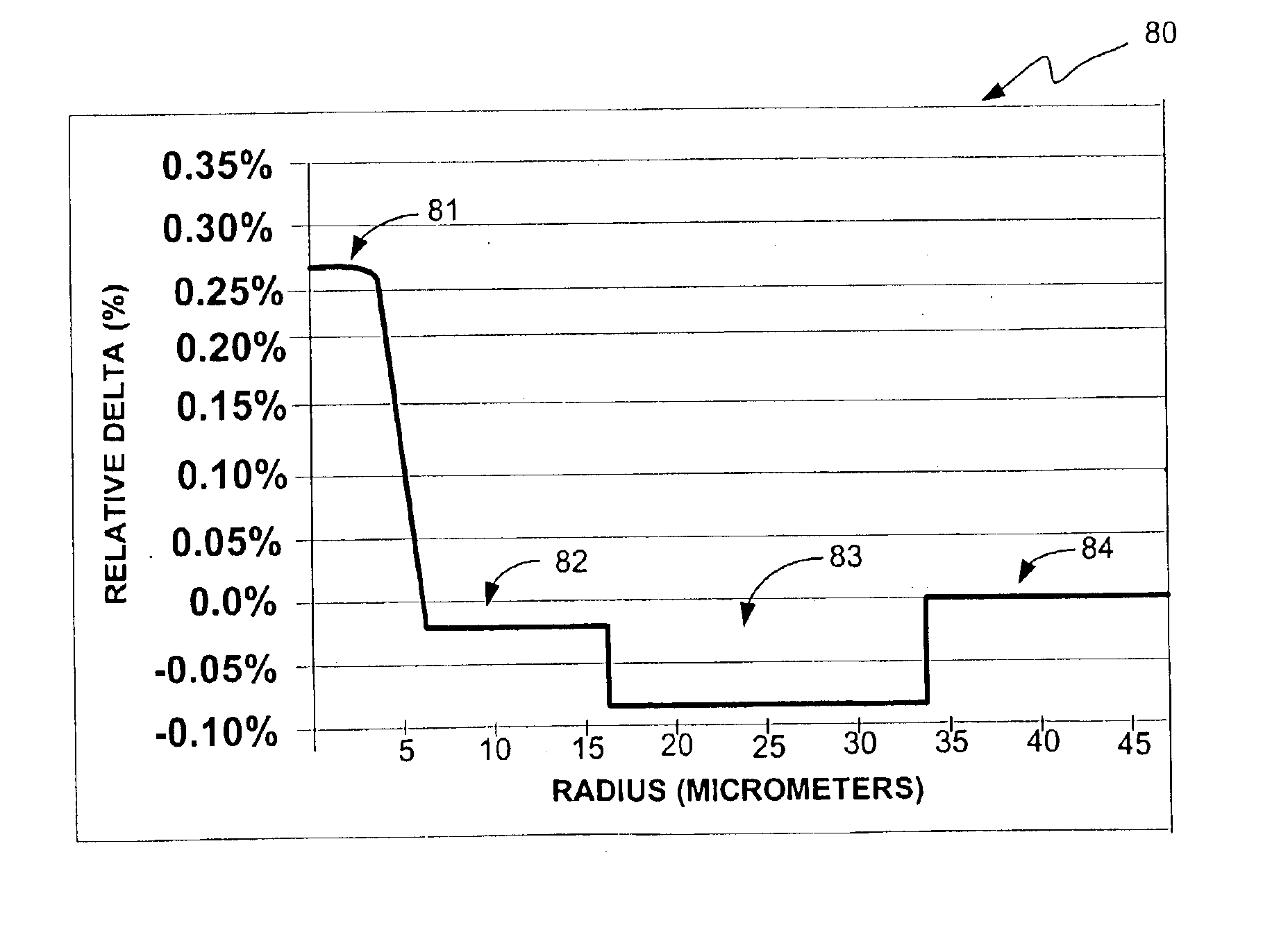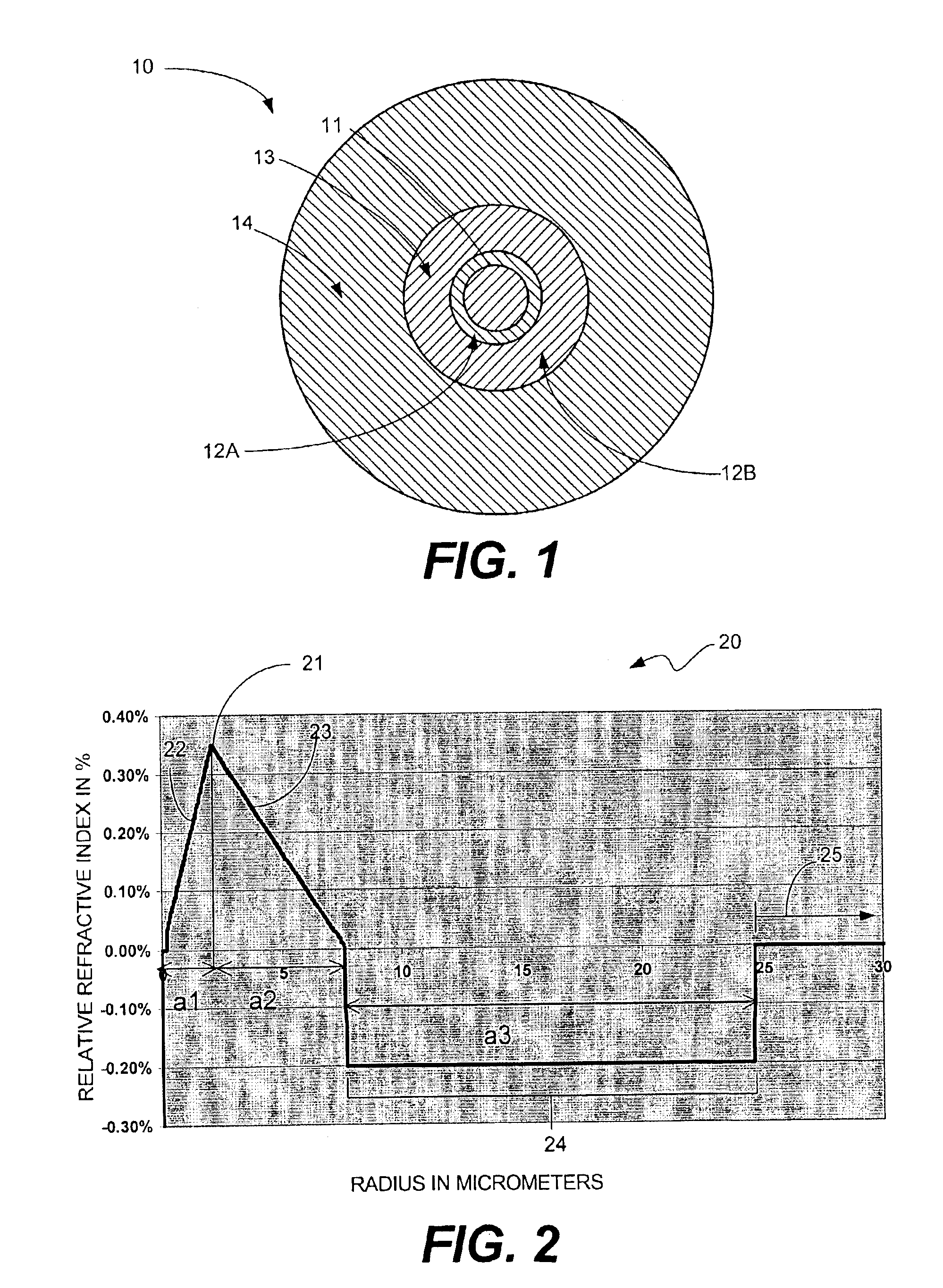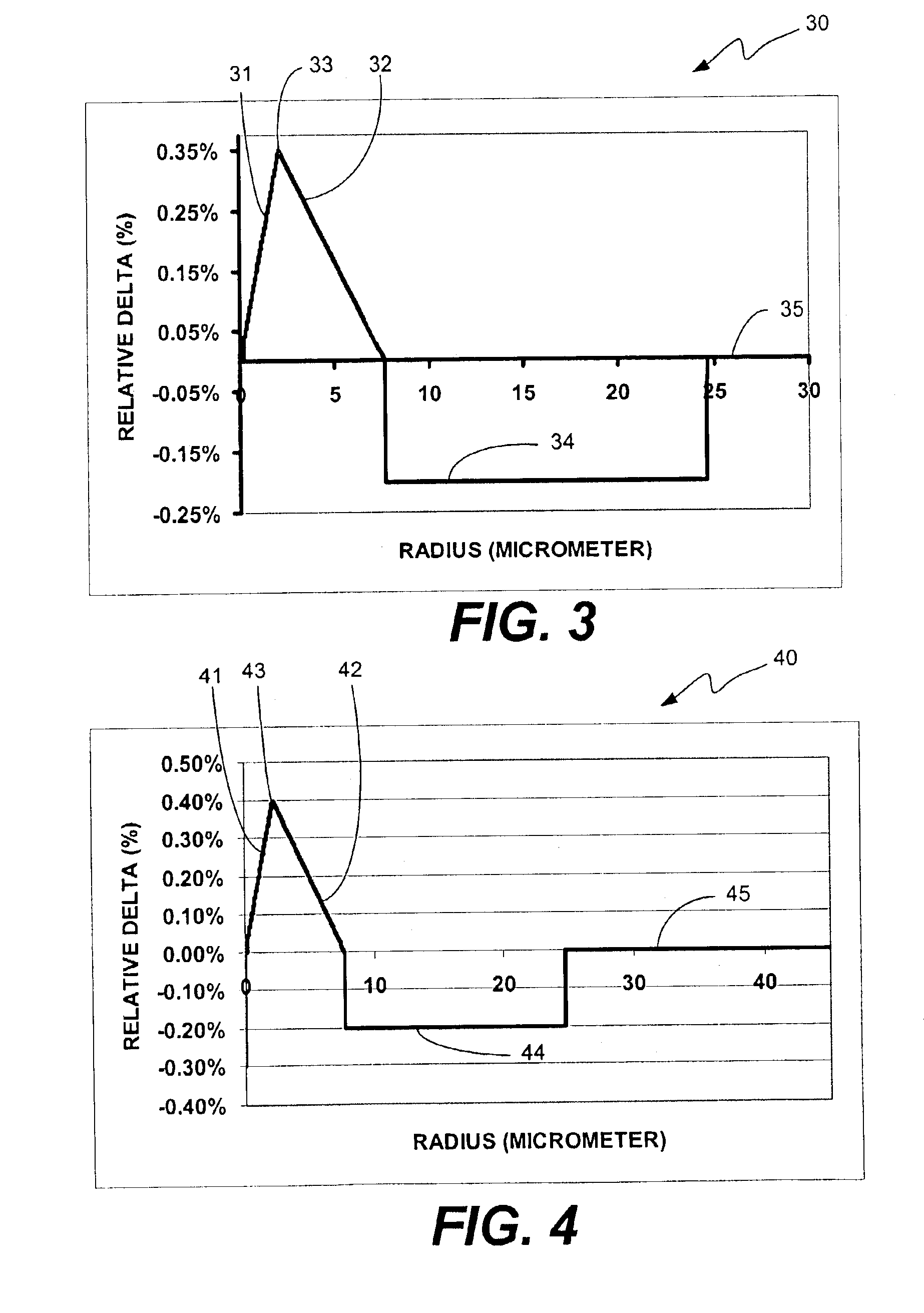Super-large-effective-area (SLA) optical fiber and communication system incorporating the same
a technology of optical fiber and super-large effective area, applied in the field of optical fiber, can solve the problems of limiting the distance between amplifiers and negatively affecting system costs, and achieve the effects of suppressing nonlinear effects, super-large effective area, and large effective area
- Summary
- Abstract
- Description
- Claims
- Application Information
AI Technical Summary
Benefits of technology
Problems solved by technology
Method used
Image
Examples
Embodiment Construction
[0018]FIG. 1 is a cross-sectional end view of a super-large effective area (SLA) optical fiber 10 in accordance with an example embodiment of the present invention. The SLA fiber 10 includes a segmented central core region 11, a first annular region 13 that surrounds the core region 11 and an outer cladding 14 that surrounds the trench region. The core region 11 is segmented into first and second core-region portions, 12A and 12B, which have relative refractive index values n1a and n1b, respectively, which are different from each other. The first annular region, or trench region) 13 has a nominal refractive index n2. The outer cladding 14 has a nominal refractive index n3. As discussed below in detail with reference to FIG. 7, an SLA fiber in accordance with the present invention may have additional regions, such as another negative refractive index region in addition to the trench region 13.
[0019]It should be noted that the optical fiber 10 shown in FIG. 1 is not drawn to scale (th...
PUM
 Login to View More
Login to View More Abstract
Description
Claims
Application Information
 Login to View More
Login to View More - R&D
- Intellectual Property
- Life Sciences
- Materials
- Tech Scout
- Unparalleled Data Quality
- Higher Quality Content
- 60% Fewer Hallucinations
Browse by: Latest US Patents, China's latest patents, Technical Efficacy Thesaurus, Application Domain, Technology Topic, Popular Technical Reports.
© 2025 PatSnap. All rights reserved.Legal|Privacy policy|Modern Slavery Act Transparency Statement|Sitemap|About US| Contact US: help@patsnap.com



